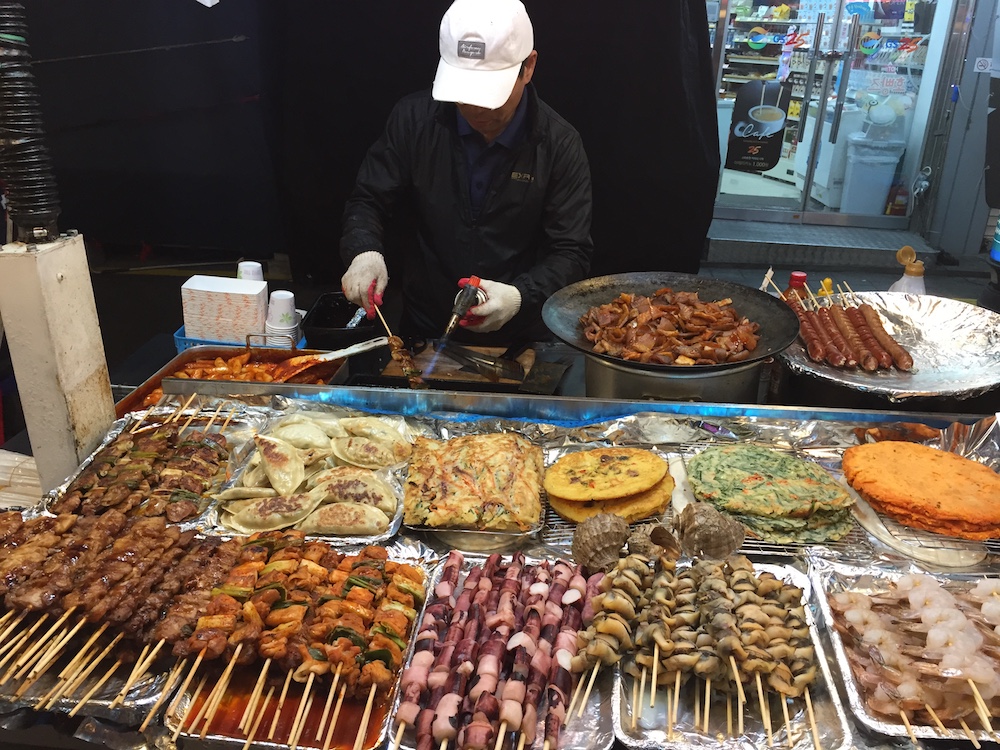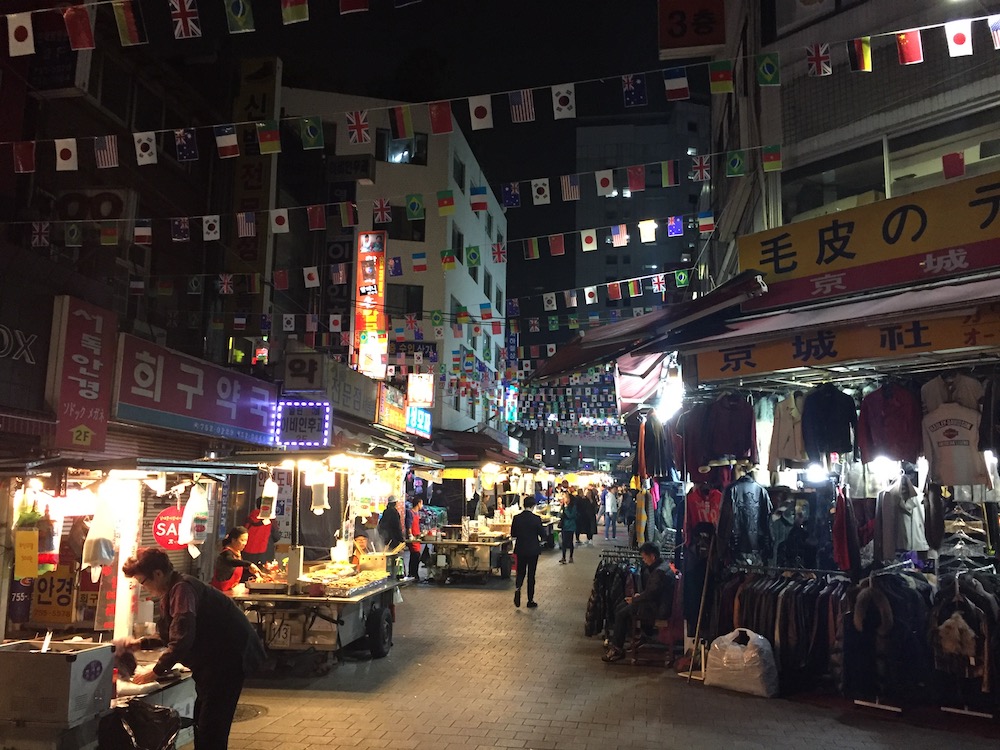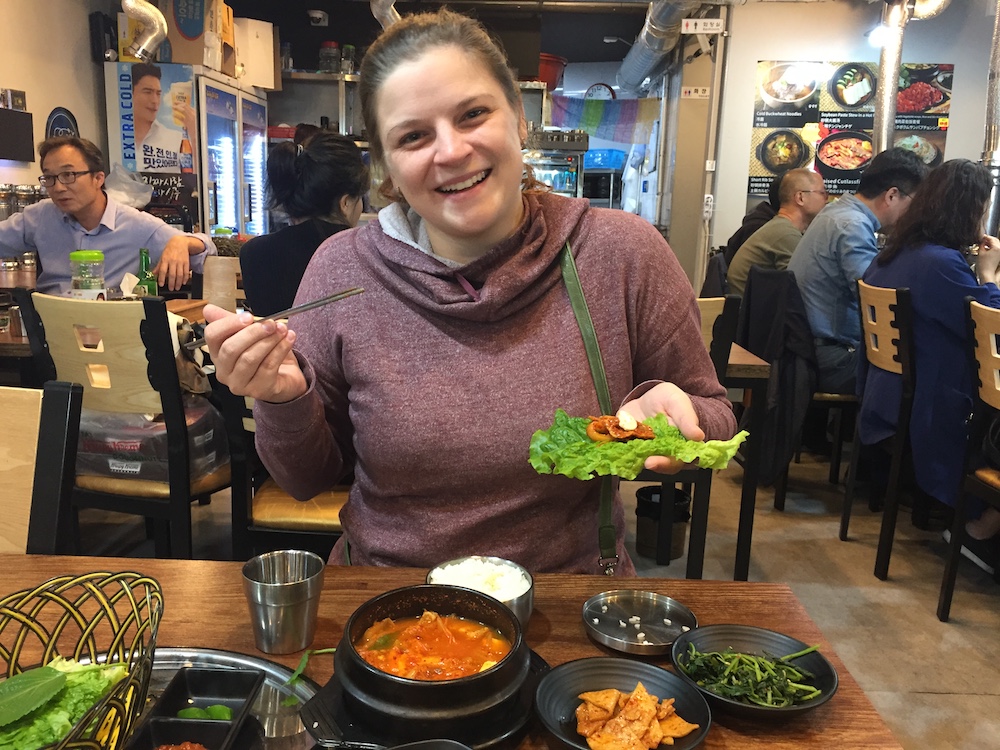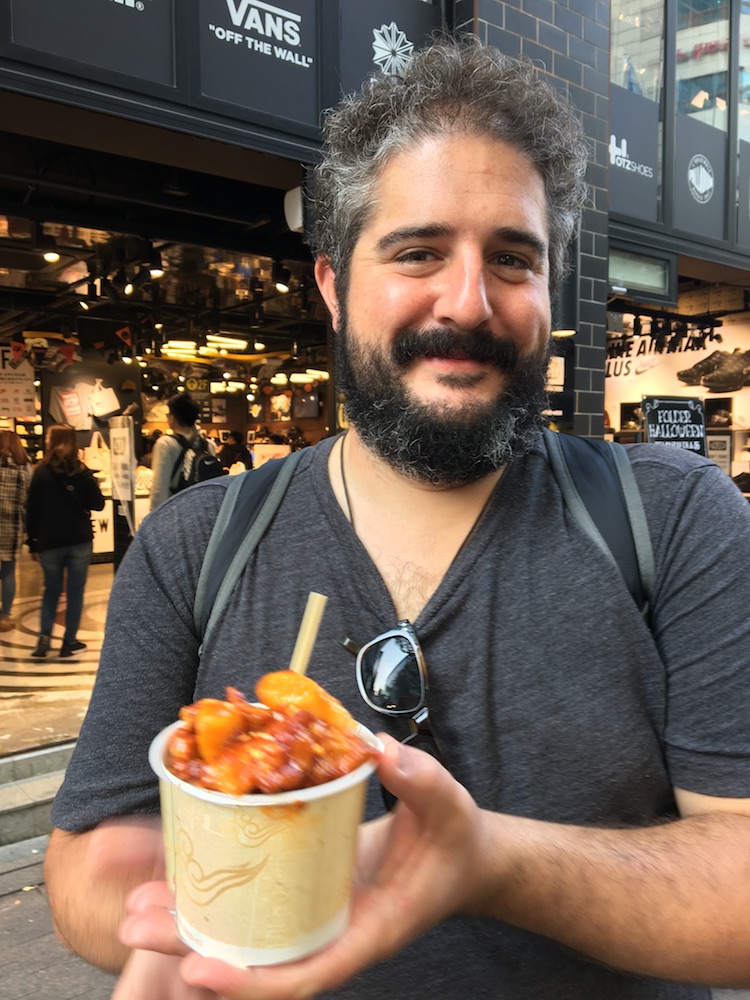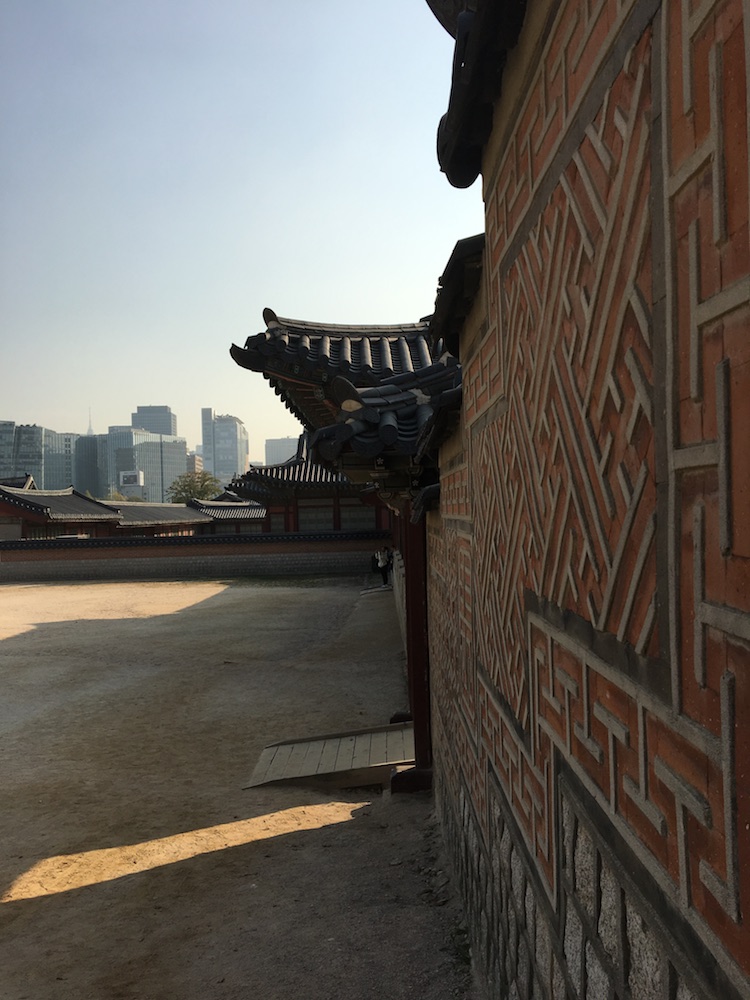Seoul

South Korea! Only a few months ago, we had decided to skip this one. But of course, that was right at the time when Trump and Kim Jong-un were throwing threats around like confetti on Twitter and a nuclear catastrophe felt so imminent, it might as well have been 1962. Now (a month later?) it should be fine, right? Besides, it was getting increasingly unpleasant in Japan with typhoons and November temperatures and since we had decided to leave our jackets in California (we’re only going to warm places anyway! …not) we were ready for some sunshine.
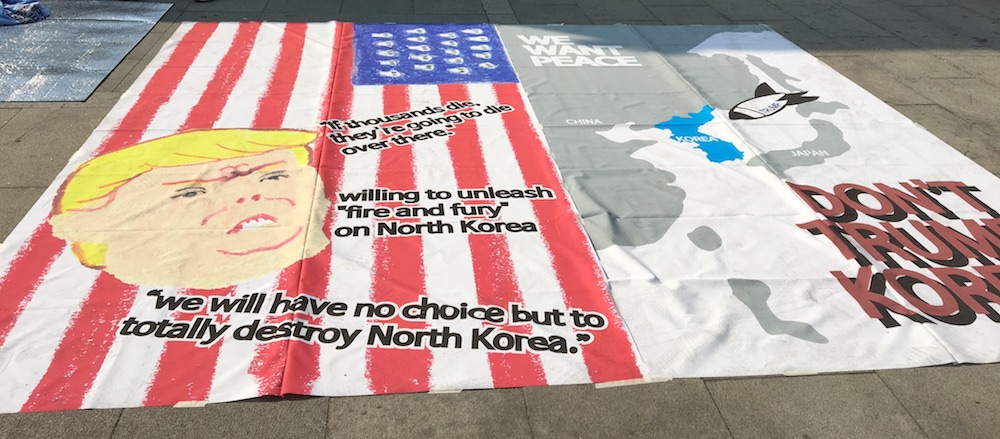
This being a rather spontaneous trip, I didn’t do much research on the country ahead of time – all the more pleasant was my surprise when we found the city a clean, bustling megapolis with quite a lot of charm. Seoul boast with not only one, but five palaces, countless night markets and futuristic architecture embellished by modern art displays like a sea of white LED lit roses.
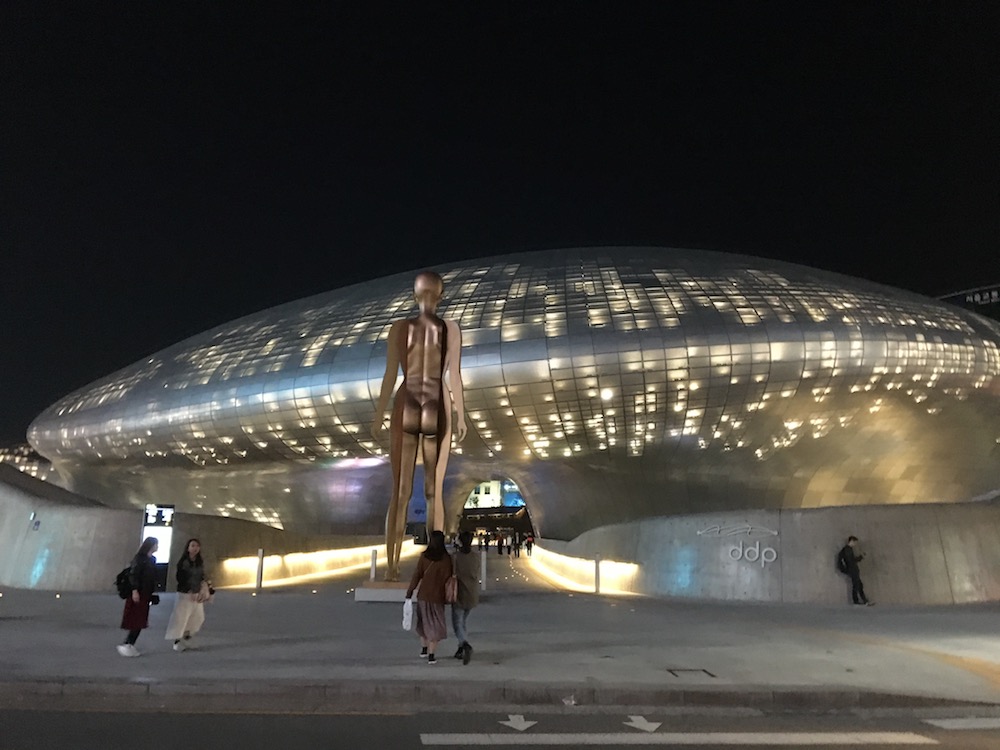
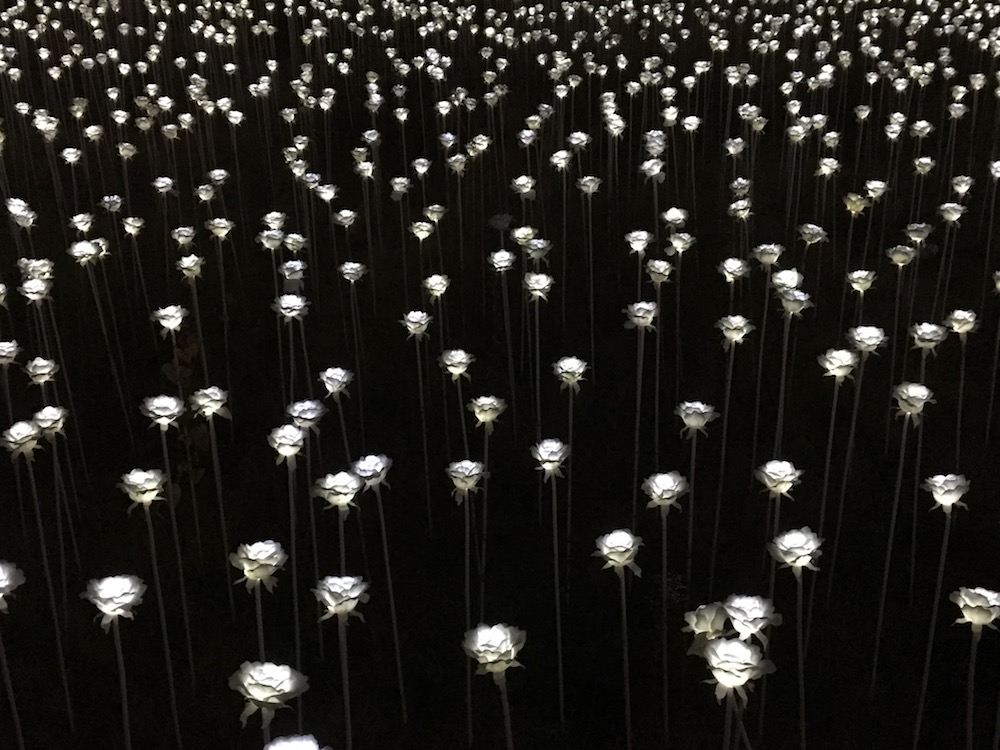
We learned that Korea had been occupied by Japan in the first half of the 20th century, a time in which Korean heritage and culture was heavily marginalized: the city’s most famous palace, Gyeongbokgung was systematically destroyed to make room for an exhibition hall. Today, the palace is rebuilt and a great tourist attraction, where South Koreans are encouraged to rent traditional outfits, called Hanbok, and take pictures in them on the vast, gorgeous grounds.
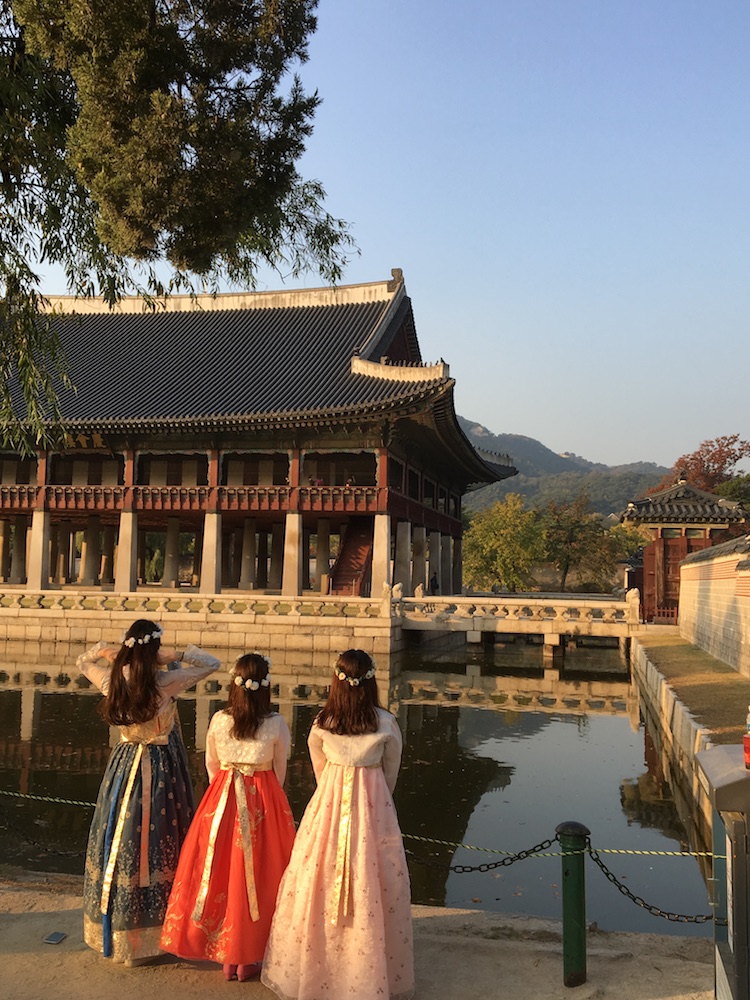
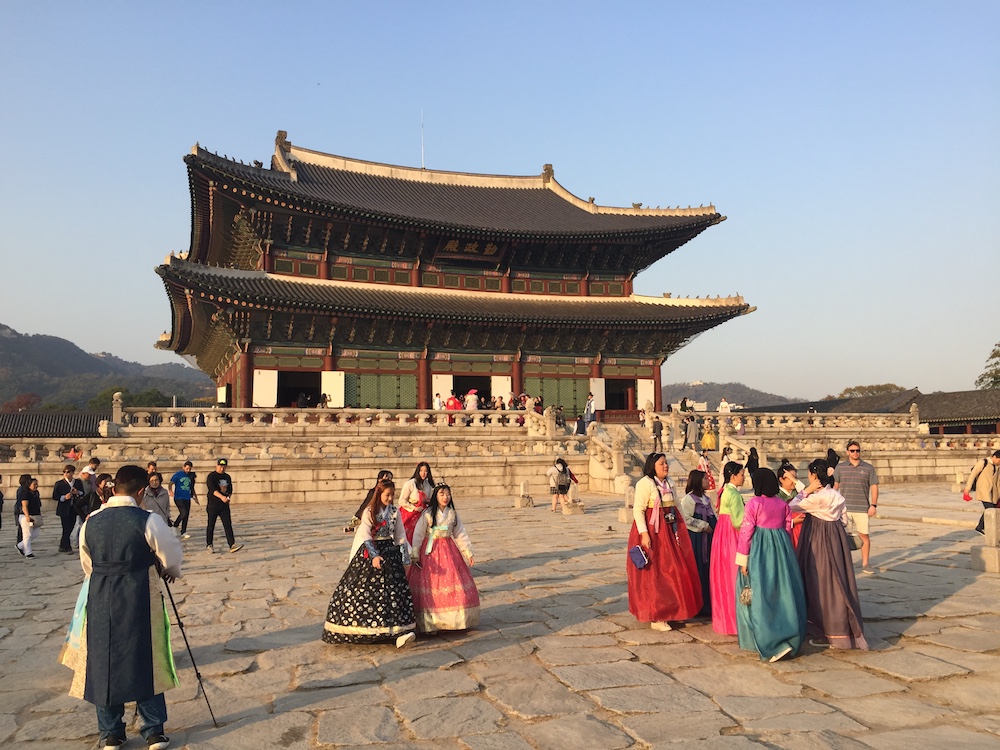
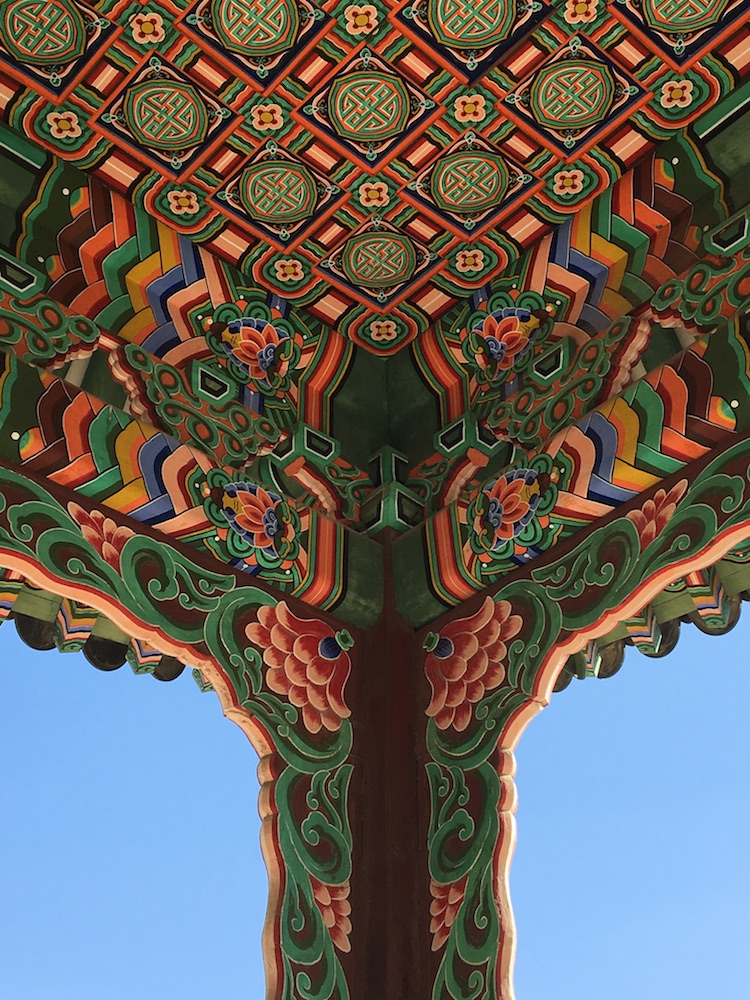
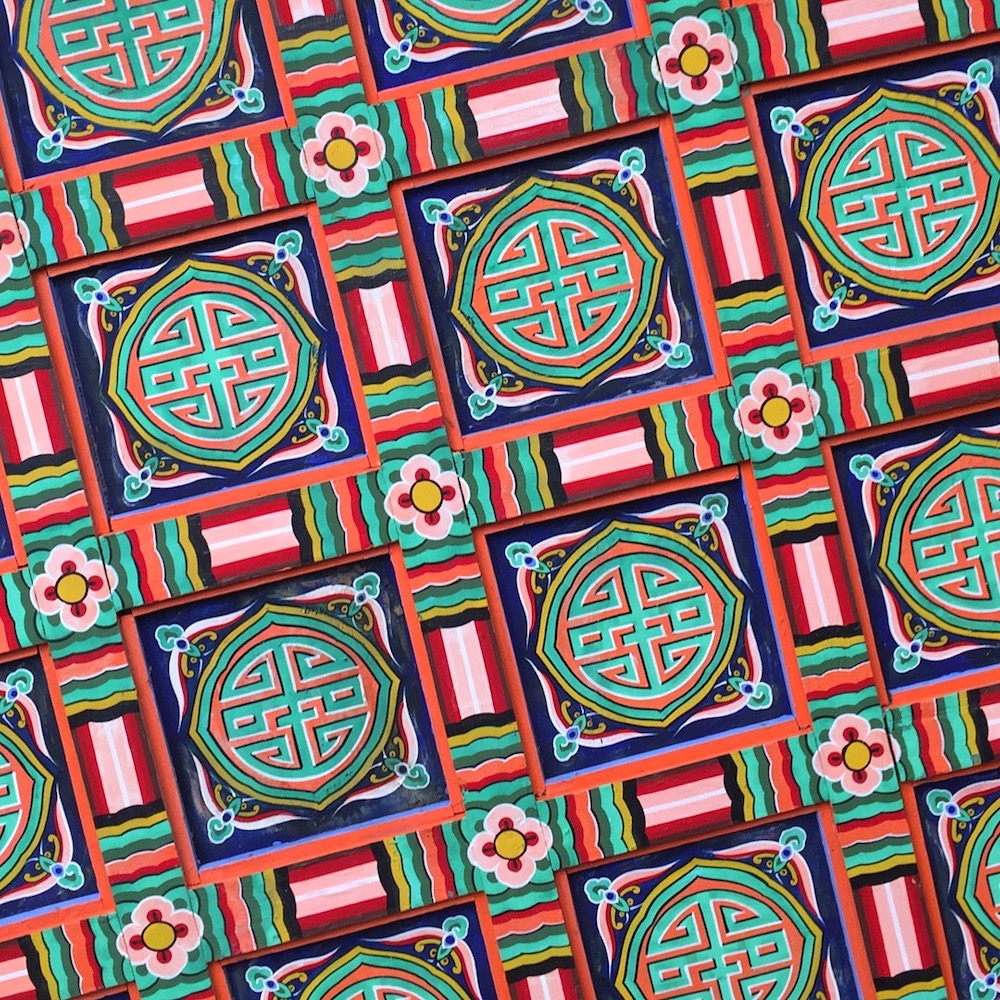
Having learned so much from only walking around, we wanted to go one step further and visited the Korean War memorial – a place that Tripadvisor Reviews raved about for its informational value and insight. Unfortunately we were disappointed. Rather than a War Memorial we found a glorification of “good” South Korean soldiers fending of “evil” North Korean invaders. Any context of the Cold War, American economic interests, let alone different views of historians were brushed over at best, but more often than not completely ignored. Rather than a calm historical analysis, the museum used live-action-like movie animations, red flashing lights and a plethora of adjectives such as “heroic, brave, desperate struggle, glorious victory etc.” to describe the South and “evil, vicious, aggressive” for the North. What bothered me so much was not that the museum was so highly emotionalized – history is emotional, the experiences of individuals can be devastating, desperate even brave and glorious – but that there was little substance or primary sources to back up these statements. The claims seemed hollow and propagandistic as they were accompanied not by the stories of individuals but rather with flashy animations and endless displays of weaponry – a grave injustice to the war’s complex history.
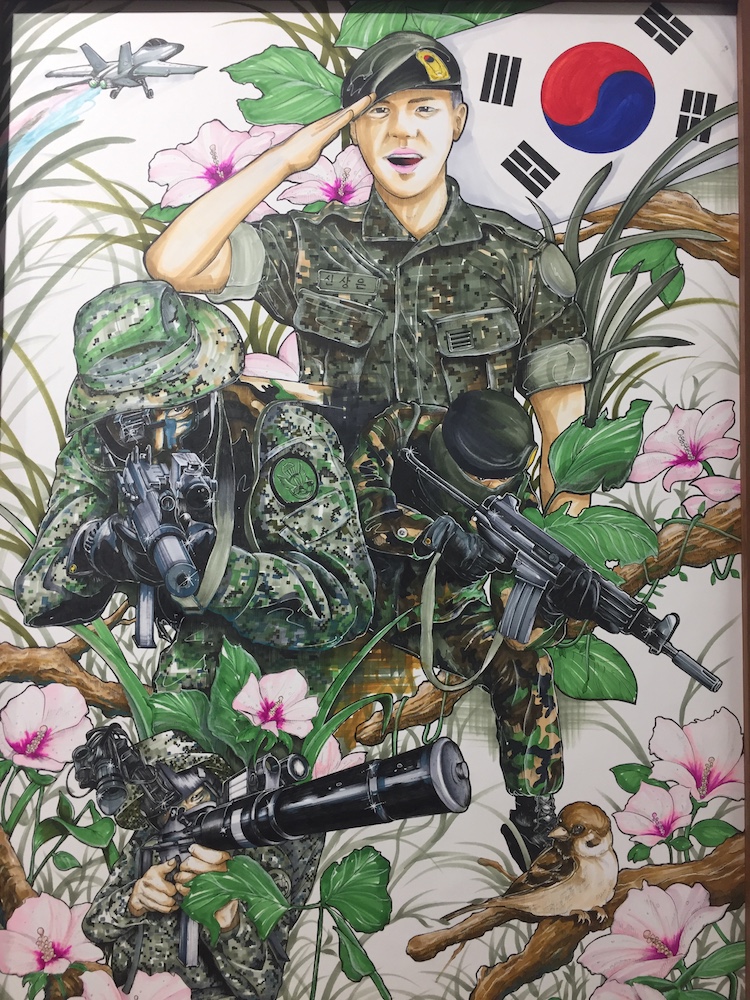
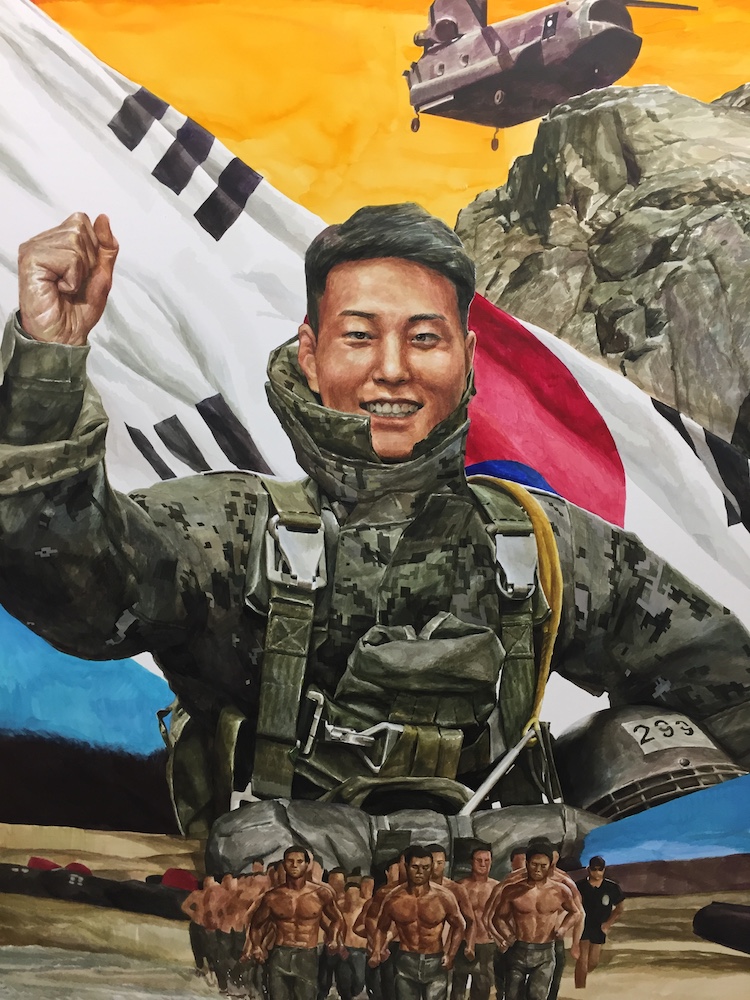
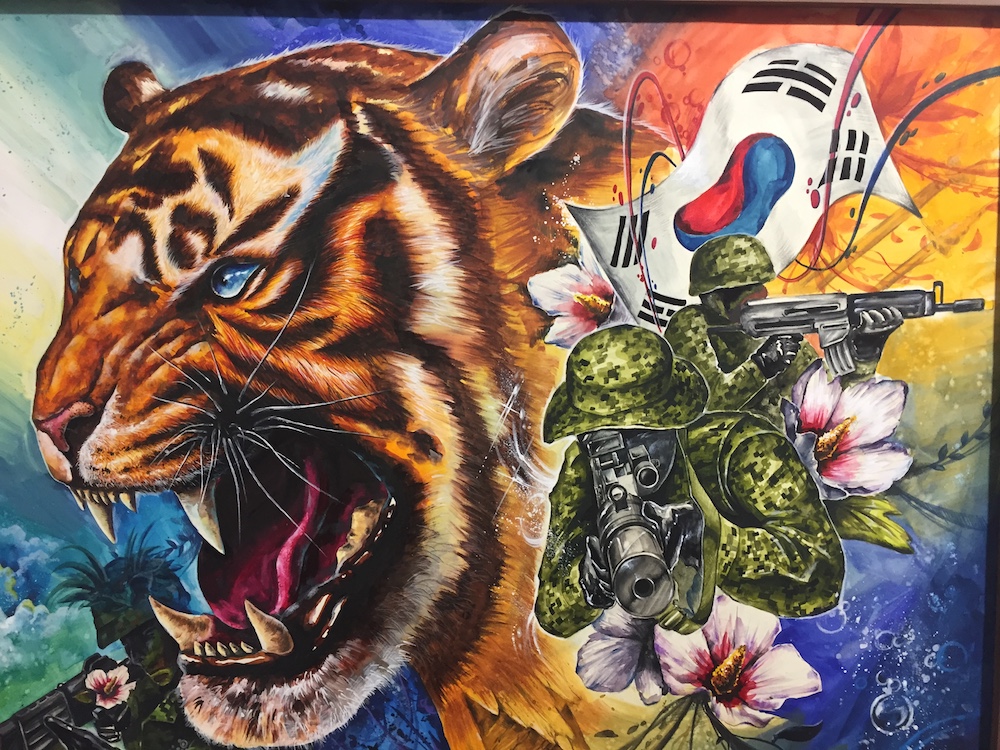
In addition, the museum played host to an ‘art’ exhibit sponsored by the South Korean military, which was shockingly obvious propaganda. While every country is guilty of this in one form or another, in the end South Korea might be too close to the war (it still technically is not over) to have a more objective memorial. The park surrounding the museum was speckled with statues of soldiers, one of them an image of a South Korean soldier embracing his remorseful younger brother who fought for the North, another one a clock that will one day be set to the time of reunification. Throughout the city we witnessed protests of all kinds: protests against Trump and his boisterous threats on Twitter, protest against those protest, arguing that this support was needed as protection, protest against THAAD (Terminal High Altitude Area Defense), protests against the military in general. It might be too much to ask for objectivity when the conflict itself has not yet been resolved and your opponent still screams war.
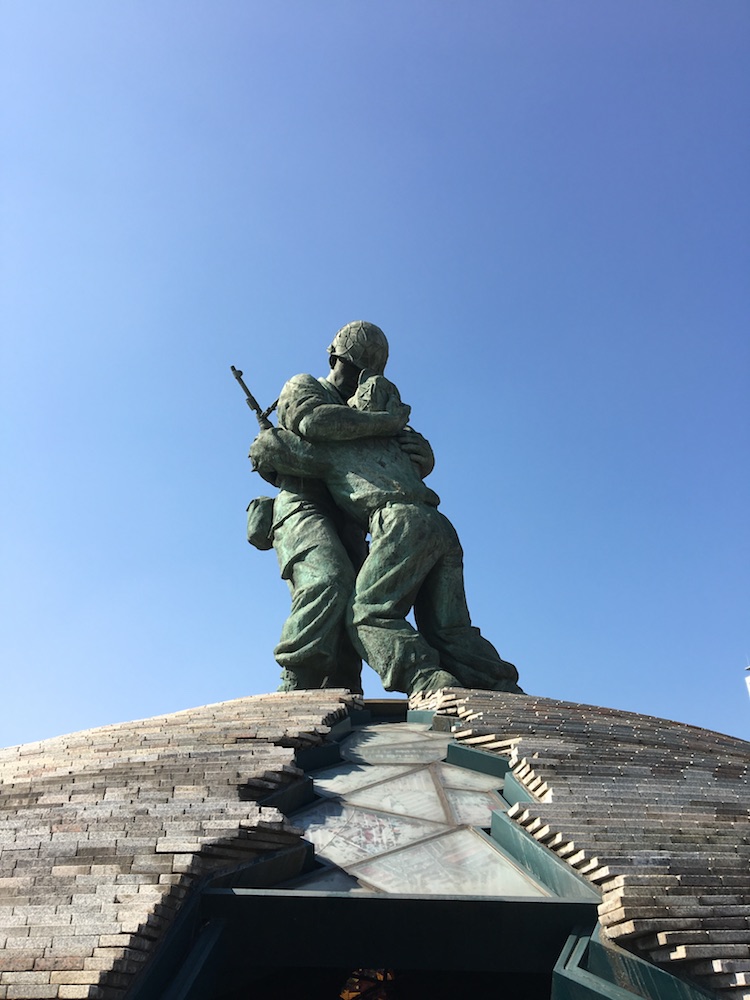
On a more cheerful note: the food was a delight! We munched our way through night markets, feasting on fried dumplings, Kimbap and all versions of grilled shrimp and fried chicken a heart could desire. When we ate at restaurants, there were always helpful hands to advise us on the right way to eat the dishes – once, an elderly waitress showed me how to wrap meat and garlic in a lettuce leaf and fed me herself. The locals were incredibly friendly and welcoming, we didn’t want to leave so soon, but we were off to meet our friends Hanna and Michel in Tapiei. South Korea was another reminder to not let what you hear on the news deter you from visiting a country – you might end up missing out on so much more.
